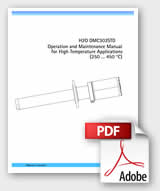Spray Dryer Optimization
The capacity of a spray dryer is the amount of water evaporated within the dryer.
The evaporation is directly correlated with the temperature drop across the dryer. The greater the difference between the inlet temperature and the outlet temperature, the more water is evaporated. In order to optimize the capacity, the inlet temperature of the dryer should be as high as possible (within the constraints of the product being dried) and held constant. This also improves the energy efficiency of the dryer.
The next step is to decrease the outlet temperature to as low as possible and still keep the powder within moisture specifications. The outlet temperature is a function of the relative humidity in the outlet air. If the relative humidity is too high (low outlet temperature), the product particles in the drying chamber will not become dry enough in the time allowed, enabling sticky particles to cause blocking or plugging. If the relative humidity is too low, excess capacity remains unused. The proper outlet temperature—or more specifically, proper outlet relative humidity—is product and dryer specific, but once established, it remains constant for a specific product in a particular dryer.
A 5% increase in capacity on a spray dryer can have a very large return on investment. (Ambient humidity changes alone can affect the capacity up to 15% from winter to summer in some areas.) Here is a sample payback analysis:
Average capacity: 3,000 lbs/hr
Annual hours of operation: 6,000
Powder price: $2.00/lb
Annual increase in revenue: $1,800,000 (.05*3000*6000*2)
In addition to the improved capacity, an exhaust humidity sensor also identifies upset conditions and prevents build up which also has a business case.



